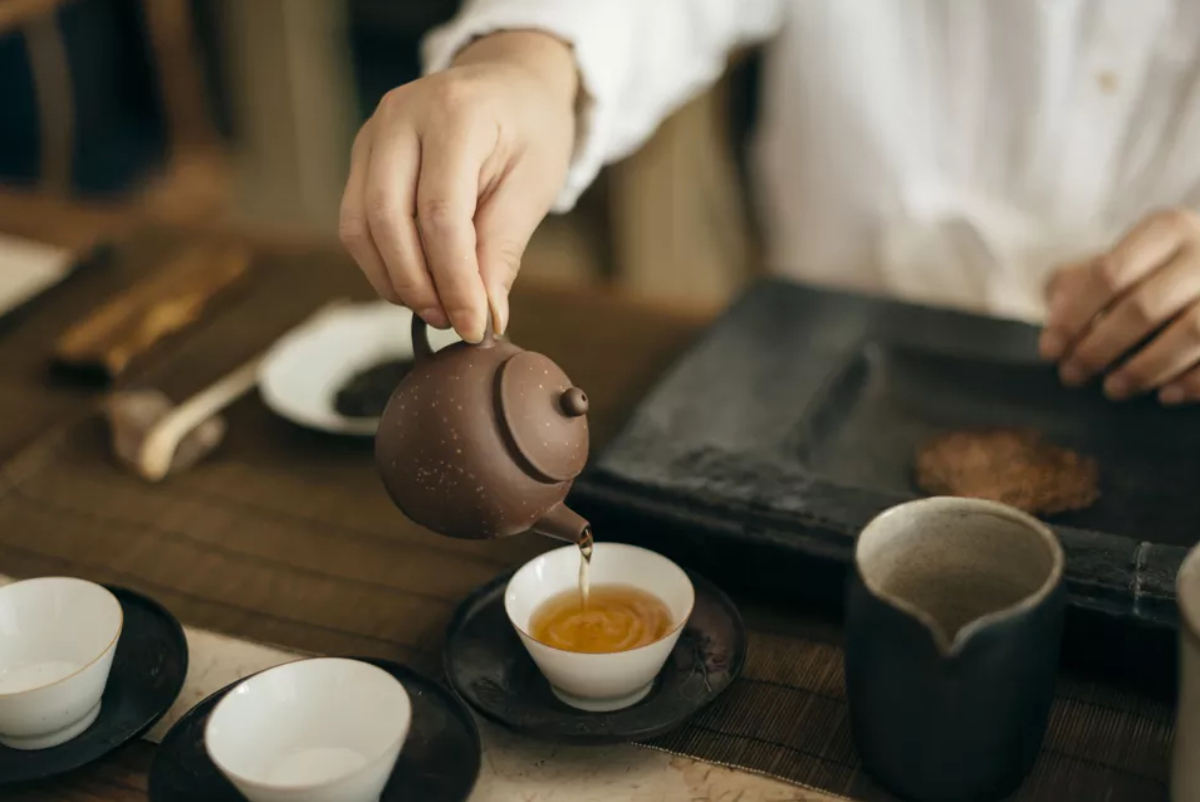7 types of Chinese tea and their health benefits
7 types of Chinese tea and their health benefits

Green tea
While green tea originated in China, it is also associated with many other cultures in Asia, most notably Japan. Green tea leaves are put through a short fermentation process and they are considered the healthiest tea to drink, as it is loaded with antioxidants and nutrients that have powerful effects on the body.
Its benefits include improved brain function, promotion of fat loss, and a lowered risk of cancer. Most types of green tea generally have less caffeine than coffee, but it’s still more than enough to keep you awake, so try not to drink it before bedtime!
Famous Chinese green teas: Longjing, Biluochun
White tea
White tea is made from steeping the dried and immature tea leaves from the same family as green tea. It is the least processed form of tea, using only the first tea buds produced from the bushes. Since the leaves are very delicate, the tea has to be prepared at the lowest temperatures to prevent over boiling and bitterness.
Its presumed health benefits as an anti-ageing agent, coupled with skin-smoothing properties, make white tea an easy choice for many. Out of the many different types of Chinese teas, it kills germs most effectively and it can also combat free radicals. Its ability to prevent cavities and promote good oral health—the tea’s lightness doesn’t stain your pearly whites—and you have yourself an all-round winner.
Famous Chinese white teas: Shou Mei, Baimudan, Gongmei
Yellow tea
When making green tea, after the leaves are processed, kneaded, and twisted, they turn yellow if not dried properly. At first, people thought of the mistake as bad green tea, but gradually they grew to enjoy the different flavour and it eventually became one of the six major types of Chinese tea.
Yellow tea is unwilted and unoxidised, but the yellow colour comes from fermentation. It is a difficult process that takes many years to master, which is the reason why high-grade yellow tea is hard to find.
Yellow tea is recommended for maintaining liver health, so all you weekend warrior’s better stock up! It can also reduce inflammation and help you with your digestion.
Famous Chinese yellow teas: Mengding Mountain Huangya, Jun Mountain Yinzhen
Oolong tea
A unique process of withering the tea leaves as well as a special drying and oxidation process results in oolong tea. Oolong tea can help reduce the risk of heart diseases, lower risk of high cholesterol, prevent diabetes, decrease inflammation, support a healthy brain, and prevent bone loss. However, oolong tea is said to obstruct the body’s iron absorption, so it is better to drink tea outside of meals to limit its impact on that front.
Famous Chinese oolong teas: Big Red Robe Tea, Tie Guanyin
Black tea
Not to be confused with the English kind of black tea, Chinese black tea is what the English refer to as ‘red tea’. Black tea leaves are put through an oxidation process similar to several other types of tea, but for a longer period of time, resulting in a brew that is much darker in colour. The gongfu tea preparation process typically favors using black tea.
The polyphenols found in black tea can help maintain a healthy gut by promoting the growth of good bacteria and inhibiting the growth of bad bacteria. That means that black teas can also act as a diuretic and help remove the excess water in your body, which might help you shed away a few pounds if you’re in a pinch!
Famous Chinese black teas: Gongfu-style black tea, Yunnan Black Tea
Post-fermented teas
Post-fermented teas are any of the darker tea varieties made from leaves that have gone through a unique process. Freshly-picked tea leaves are exposed to humidity and oxygen for an extended period of time, even longer than that of black teas. Pu’er is the perfect example of dark teas, with fermentation ranging from one year up to 20 years.
Because it is fully oxidised, Pu’er tea has a lower antioxidant content than white or green tea, but the caffeine, vitamin, amino acid, and phospholipids in dark tea are helpful in promoting healthy digestion, regulating fat metabolism, stimulating gastric juice secretion, and increasing appetite.
Dark tea also has strong functions in cutting grease and digesting, which is great during or after a meal. However, the fermented Pu’er tea is rich in tea pigment, so make sure to drink in reserved amounts, as it may stain your teeth.
Chinese flower teas
Next to tea leaves, China also has a renowned reputation for its flower teas. Flowers are believed to have a lot of different health properties and are used in Chinese medicine as well. Many people may be familiar with the ‘flowering tea’, where a bundle of dried tea leaves are wrapped around dried flowers and when dropped in a
Glass of hot water, the bundle bursts open into bloom. Here are some of the more popular flower teas and their benefits:
Jasmine: Controls stress levels, aids digestion, and relieves menstrual pain.
Chrysanthemum flower: Lowers blood pressure, removes toxins, and enhances eyesight. People who are catching a cold should avoid it though.
Osmanthus flower: Enhances overall lung health, dispelling cold and dampness in the body, and eases stomach pain. However, pregnant women should avoid it.
Hibiscus: Great for lowering high blood pressure.
Rose: Improves blood circulation, but it also means that females on their period should avoid it.
Honeysuckle: Detoxifies the body and relieves heat—perfect for the summer months.
Lily: Moistens your lungs, cures coughs and dizziness, and helps with clearing the stomach.
https://www.localiiz.com/post/food-drink-chinese-tea-health-benefits


